Mind You 2013 Building Continuous Chicken Feeder
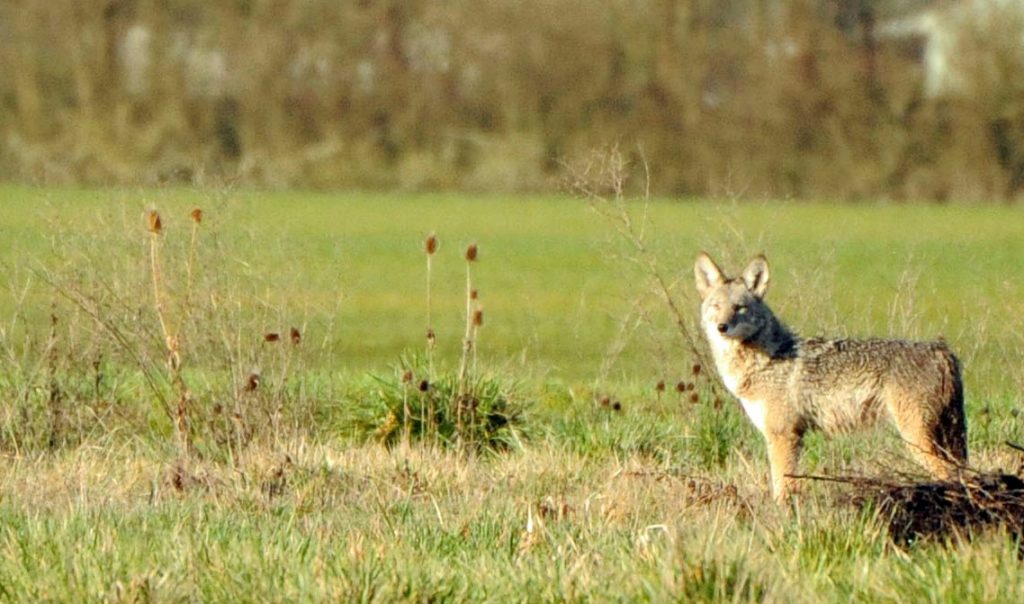
With the loss of their natural habitat, more wildlife
- Dogs and coyotes
- Bobcats
- House cats
- Foxes, especially red foxes
- Raccoons
- Members of the weasel family, especially the least and long-tailed weasels
- Skunks
- Opossums
- Snakes, especially rat snakes
- Hawks, including Red-tailed, Red-shouldered, and Cooper's hawks
- Owls, Most commonly great horned owls
IDENTIFICATION OF THE PROBLEM PREDATOR
The best long-term solution for protecting your flock is preventing predators from getting to it. Of course, this tactic is easier said than done. To develop an exclusion plan, you need to determine which type of animal is preying on your birds.
Often, the condition in which you find your flock is an indicator of which predator is involved.
- If adult birds are missing but no other signs of disturbance exist, the predator probably is a dog, a coyote, a fox, a bobcat, a hawk, or an owl. These predators typically are able to kill, pick up, and carry off an adult chicken. Hawks typically take chickens during the day, whereas owls take them during the night.
- If chicks are missing but no other signs of disturbance exist, the culprit may be a snake, a rat, a raccoon, or a house cat. Such predators sometimes leave some feathers and wings scattered away from the site because they are not able to swallow these parts.
- If birds are dead but not eaten and have parts still intact, a weasel may have attacked the flock. Often the chickens' bodies are bloodied. Also, you might notice that internal organs have been eaten.
- If birds are dead and not eaten but are missing their heads, the predator may be a raccoon, a hawk, or an owl. Raccoons sometimes pull a bird's head through the wires of an enclosure and then can eat only the head, leaving the majority of the body behind. Also, raccoons may work together, with one scaring the chickens to the far end of a pen and the other picking off the birds' heads.
- If birds are only wounded, not dead, various predators may be to blame. If birds show signs of bites all over, a dog may have attacked the flock. Dogs do not have sharp enough teeth to consume animals cleanly. If the wounds are on the breasts or legs of young birds, an opossum may be the problem. Bites on the hocks of young birds often indicate that rats have preyed on the flock. If birds have bites and show signs that their intestines have been removed through their cloacae, the attacker may be a member of the weasel family or cannibalism may be occurring in the flock.
- If eggs are missing, one of several predators—including skunks, snakes, rats, opossums, raccoons, blue jays, and crows—may be at fault.
In addition to examining the condition of your flock, you may be able to identify tracks of a predator that is a mammal. To view tracks more easily, put fine sand or talc powder around the area, and look for tracks the following day. The images of tracks shown in the next section of this article may help you identify a predator.
PREDATOR BEHAVIOR
To understand how and why various animals attack poultry flocks, it can be helpful to know more about their behaviors. Knowledge of predator behavior provides background you can use as you try to identify and address predators of your flock.
Dogs and Coyotes

Domestic dogs allowed to run free in a neighborhood can be a problem for poultry flocks. They often kill simply for the fun of it. Dogs descended from the wolf and have retained some of the hunting instinct of this predecessor. Not all dogs will attack a poultry flock. In fact, some breeds are good guard dogs for a flock. Factors that contribute to the likelihood that a dog will attack a flock include the breed of the dog, the presence of other dogs, and the dog's past experiences. Some breeds have a greater tendency to chase prey than others. This inclination can be heightened by the presence of other dogs, often resulting in pack behavior. Also, if a dog has had success in the past at getting food by attacking a poultry flock, it is more likely to repeat the behavior.
Although coyotes have been seen traveling in large groups, they usually hunt in pairs. Coyotes are primarily nocturnal (active at night) but often can be seen during daylight hours. They were once diurnal (active during the day) but, through adaptation, have developed more nocturnal habits to adjust to habitat pressure from humans.
Bobcats

The most common wildcat in the United States, the bobcat is only about twice the size of a typical domestic cat. Like cats, bobcats can see in low light. They prefer to hunt during the twilight hours of dawn and dusk but will attack
House cats

Even if well-fed, domestic cats will kill young birds. Cats are messy eaters that tend to leave parts of prey in the open areas where they have eaten. Typically, they eat the meaty portions of a bird and leave the skin, with feathers attached. With smaller birds, however, cats often consume the whole bird, except for the wings and scattered feathers. In addition, cats usually leave teeth marks on every exposed bone of prey they have eaten.
Foxes
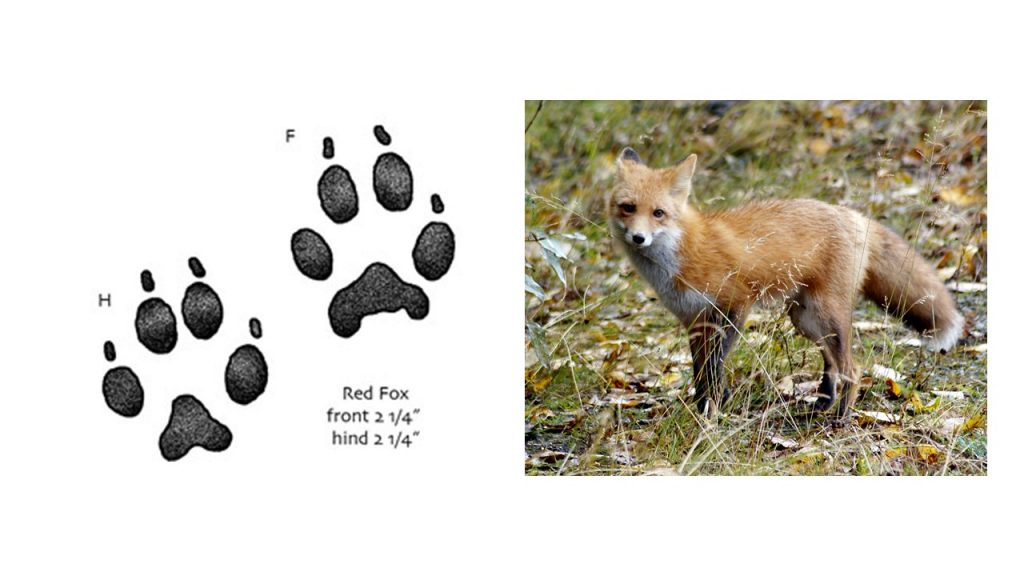
Foxes, red foxes in particular, prey on poultry flocks. Foxes usually attack a bird at the throat, but some kill by multiple bites to the neck and back. Normally when a fox has been in the hen house, evidence includes only a few drops of blood and feathers. The fox carries away the dead bird, often to a den. Foxes also eat eggs. They usually open the eggs just enough to lick out the contents and leave the shells beside the nest. Most foxes live in wooded areas or on open plains, where they dig dens in the ground. They sometimes use hollow logs for dens. Gray foxes, the only foxes that readily climb trees, may den in hollow cavities of trees.
Raccoons

Raccoons enter poultry houses and take several birds in one night. They often tear and chew a bird's breast and crop and sometimes eat the entrails. They may remove eggs from the nest and take them away, usually within 9 meters (28 feet) of the nest, to eat them. Garbage cans and dumps can be major sources of food, attracting raccoons to urban areas. Once settled in an area, raccoons will seek other food sources, including backyard poultry flocks.
Weasels

The least weasel has been referred to as the smallest living predator. It is long and slender, with a long neck, a narrow head, and short limbs. Least weasels weigh only about 30 to 55 grams (1 to 2 ounces) and are usually 165 to 205 millimeters (6-1/2 to 8 inches) long, with much of that length
Skunks
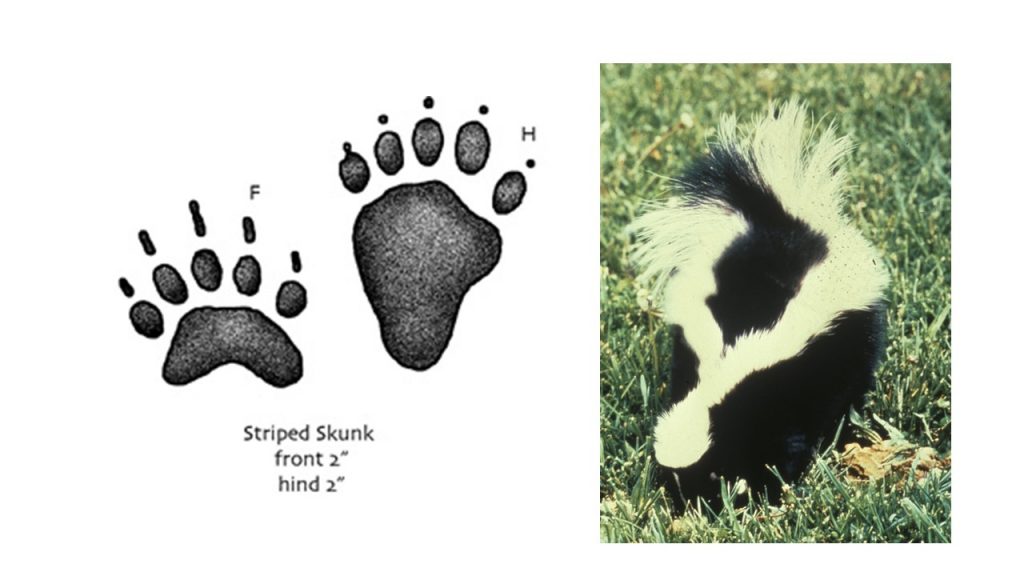
Skunks do not kill many adult birds. In general, when a skunk attacks a flock, it kills only one or two birds and mauls others considerably. Also, skunks love eggs. Usually, a skunk opens an egg at one end and punches its nose into the hole to lick out the contents. Eggs that have been eaten by a skunk may appear to have been hatched, except that the edges of their openings are crushed. A skunk may remove eggs from a nest but rarely carries them more than 1 meter (3 feet) away.
Opossums

Opossums are omnivorous in that they eat birds, fish, insects, mushrooms, fruits, vegetables, and even eggs. When an opossum raids a poultry house, it usually kills one bird at a time, often mauling its victims. It causes eggs to be mashed and messy, often chewing the shells into small pieces and leaving those pieces in the nest. Opossums usually begin feeding on adult poultry at the cloacal opening. They consume young poultry completely, typically leaving behind only a few wet feathers.
Snakes
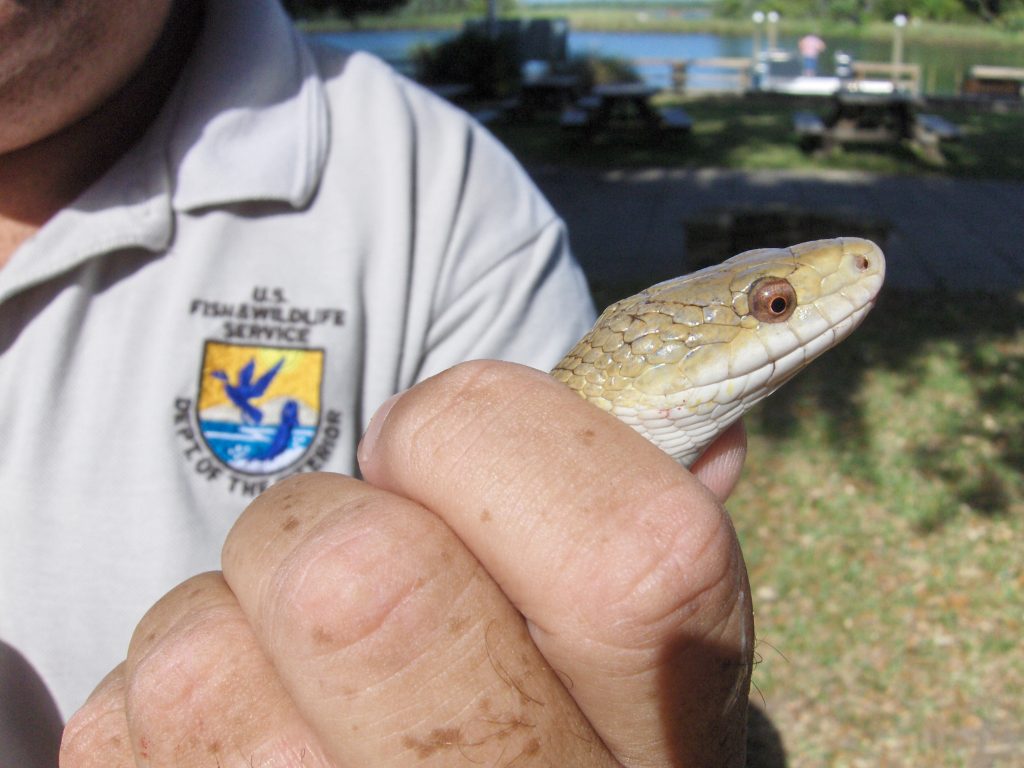
Snake predation can be hard to identify because snakes eat their prey whole. For example, a snake can eat an egg whole, so the only sign of intrusion is a missing egg. The aftermath of a snake's egg-eating activity differs from that of raccoons and skunks, which typically leave shells behind after eating eggs. Rat snakes are known to eat eggs and young chicks (those less than a month old). The size of the hole needed to get to a flock depends on the size of
Hawks
Of the variety of hawk species that prey on poultry flocks, the most common are Red-tailed, Red-shouldered, and Cooper's hawks. Hawks typically take their prey during the day. They have very keen eyesight and scan for prey from elevated perches. When a hawk spots prey, it swoops down and lands on the prey with its talons, often killing the prey on impact. A hawk may carry off a young or bantam bird and eat it elsewhere, leaving no indication of predation other than a missing bird. If a hawk eats a bird in place, it typically eats the breast, cleanly plucking the feathers. Feathers with flesh clinging to their ends may indicate that a hawk did not kill the bird but instead scavenged on a bird that died of some other cause.

Red-tailed hawks live in various habitats, including scrub deserts, grasslands, farm fields, pastures, parks, and woodlands. They need an open hunting area with several scattered perches. The red-tailed hawk is one of three species sometimes referred to as chicken hawks , although it rarely preys on standard sized chickens.

Red-shouldered hawks live in forests and swamps. They may store food near their nest to eat later. Though red-shouldered hawks usually eat rodents and other small mammals, they will eat poultry if the opportunity arises. They sometimes are referred to as hen hawks .

Cooper's hawks, which can fly well through heavily wooded areas, prefer to live in deciduous and mixed forests.
Owls
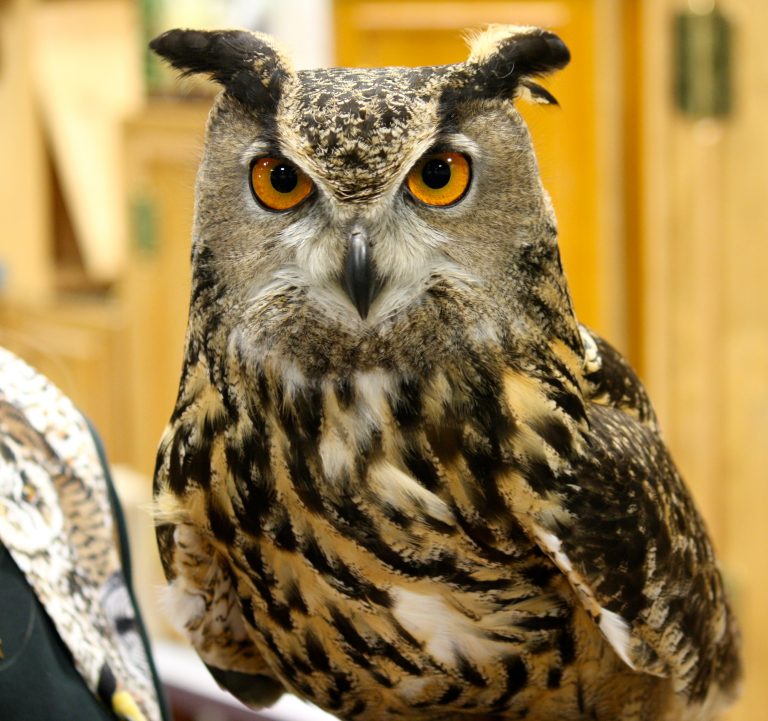
The owl that most commonly preys on poultry flocks is the great horned owl. Normally, barn owls and screech owls do not bother poultry flocks. Owls are more active at night, and that is when they typically take birds. Great horned owls live in many types of habitats, from coastlines to grasslands to mixes of woods and open fields. Great horned owls eat many kinds of animals, including chickens, ducks, and other poultry.
ACTIONS TO PREVENT PREDATION
Once you have identified which predators are causing problems with your flock, you can take actions to thwart their attacks. These actions may involve changing a flock's enclosure, modifying the habitat around the area where you keep a flock, using a guard dog, or seeking assistance from wildlife services.
Making improvements to fencing and housing
Many flock owners who allow their birds to free-range protect their flocks from ground predators by using movable fences. These fences may or may not be electrified. For an electrified fence, the amount of electricity used should be enough to stun but not kill an animal. Aside from being less dangerous to people, this type of fence more effectively keeps predators away from a flock. A stunned predator may be discouraged from bothering the flock. A dead predator, however, will soon be replaced by another predator.
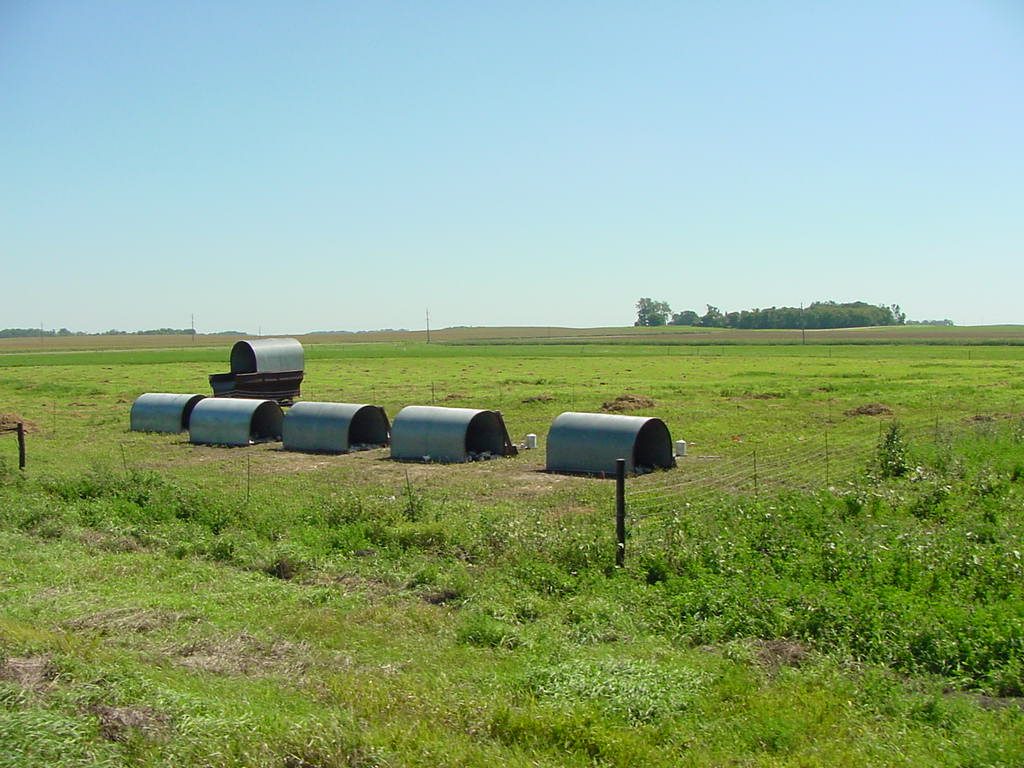
In addition to attracting ground predators, free-ranging poultry are highly susceptible to aerial predation from hawks and owls. One solution to this problem may be modifying the habitat around the area where the poultry range. Eliminate any perch sites within 9 meters (100 yards) of the flock by removing isolated trees and other perching surfaces. You also may consider housing the poultry at night. Most poultry can be trained to move into a poultry house at night by feeding or watering them indoors at dusk. If a persistent hawk or owl is in an area, the easiest way to protect your flock is to use a covered run. Orange netting is best because hawks and owls see orange well. Hawks can get through any loose or weak spots in the covering, so make sure it is secure. Keep in mind that hawks and owls are federally protected species; you may not legally shoot, trap, or euthanize these birds. Noise and bird bombs are no longer legally available, and they have not been shown to be overly effective anyway.
Another option for protecting a flock is to keep the flock confined in floorless pens that are moved around on pasture routinely, often daily. In some cases, however, such enclosures may not be sufficient to protect the flock, and additional peripheral fencing may be needed.
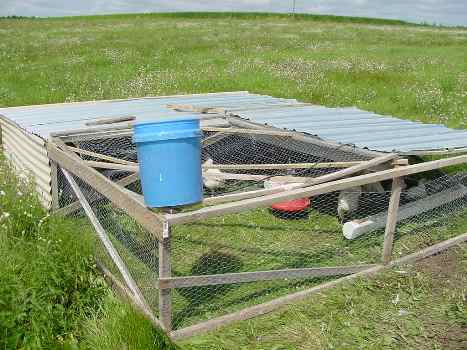
For persistent predators, it may be necessary to provide your flock with a run that is covered with welded wire. If you allow your birds to go in the run at night, make sure that predators are not able to dig under the fencing. Bury hardware cloth at least 30.5 centimeters (12 inches) into the ground to deter diggers.
Additional recommendations for management precautions include the following strategies:
- Have the flock roost inside a secured location at night, making sure to close and lock all doors.
- Ensure that the area where the birds live is clean and well-kept, with no food left in the run.
- Remove sick, dying, and dead birds immediately.
As you consider possible options for improving the area in which you keep your flock, keep in mind that lighting the area as a predator deterrent is not effective for laying flocks because of the disruption to egg laying. Also, although some flock owners have used periodic noises to deter predators, predators become accustomed to the noises in many cases, and the strategy does not remain effective.
Using guard animals
If you want to free-range your flock and local predators are a problem, consider getting guardian dogs. If well-trained, these dogs are extremely effective at deterring predators, both during the day and at night. This approach to predator control requires that the dogs stay with the flock at all times.

SEEKING ASSISTANCE FROM WILDLIFE SERVICES
State and federal wildlife services are available to help you identify and prevent many predators of poultry flocks. If you are interested in trapping, killing, or relocating predators, you must contact your local wildlife service. For many states, this is the Wildlife Services program of the US Department of Agriculture's Animal and Plant Health Inspection Service. For others, it may be a state agency.
Predator photos courtesy of the US Fish and Wildlife Service.
Animal track images courtesy of the US Geological Survey (USGS).
FOR MORE INFORMATION
Webinar recording: Predator management for small and backyard flocks. Aug 2020.
Webinar recording: Predator control for small and backyard flocks. Feb 2017
Webinar recording: Managing predators with a small or backyard poultry flock. Sep 2013.
Source: https://poultry.extension.org/articles/poultry-management/predator-management-for-small-and-backyard-poultry-flocks/
0 Response to "Mind You 2013 Building Continuous Chicken Feeder"
Post a Comment